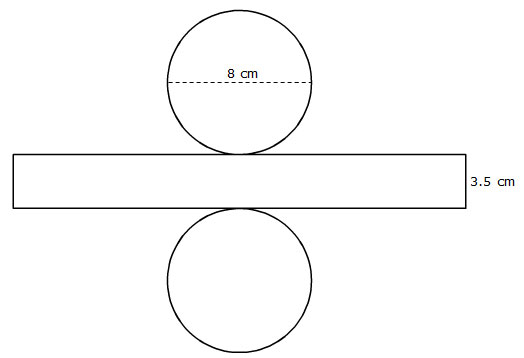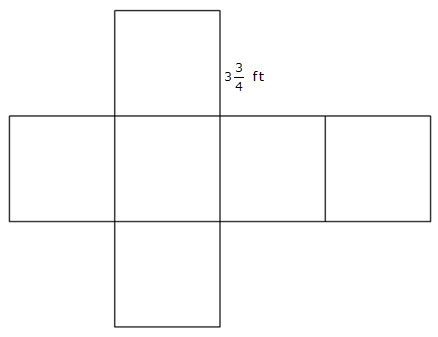Interactive popup. Assistance may be required.
B stands for the area of the base, and h stands for the height of the prism.
In the last section, you used nets to represent three-dimensional figures and determine the surface area of those figures. In this section, you will use nets to represent three-dimensional figures and determine the volume of those figures.
Knowing that volume is measuring the capacity of a three-dimensional shape, the net of the shape is very helpful in finding the volume.
Interactive popup. Assistance may be required.
B stands for the area of the base, and h stands for the height of the prism.
The nets for three figures are shown.
![]() Match each net with the shape of the base, formula for the area of the base, area of the base, and volume of the figure. Drag the number or formula to the appropriate place in the interactive. Click the Reset button if necessary to reset the interactive. You may use some tiles more than once or not at all.
Match each net with the shape of the base, formula for the area of the base, area of the base, and volume of the figure. Drag the number or formula to the appropriate place in the interactive. Click the Reset button if necessary to reset the interactive. You may use some tiles more than once or not at all.
Use the information in the interactive you just completed to answer the following questions.
Interactive popup. Assistance may be required.
Use the Pythagorean Theorem.
Interactive popup. Assistance may be required.
The volume formula for the cone requires you to multiply the product of the area of the base and the height by 1 over 3 1 3 .
Use the nets shown to calculate the volume of the figures they represent.

Interactive popup. Assistance may be required.
What shape is the base of this figure? What area formula would you use to calculate the area of the base?
Interactive popup. Assistance may be required.
V = Bh

Interactive popup. Assistance may be required.
What shape is the base of this figure? What area formula would you use to calculate the area of the base?
Interactive popup. Assistance may be required.
V = Bh
